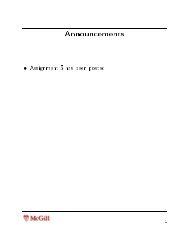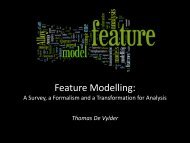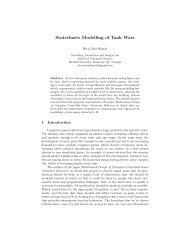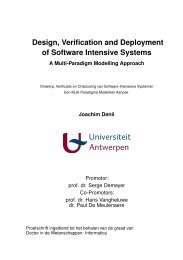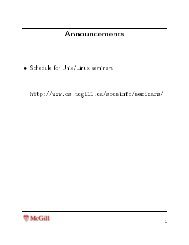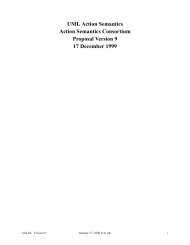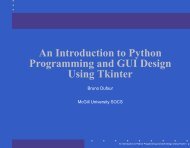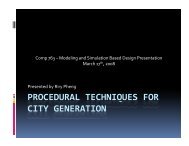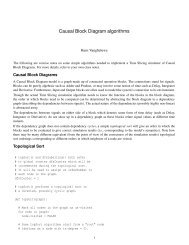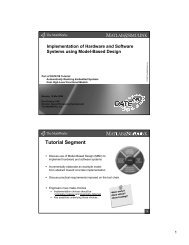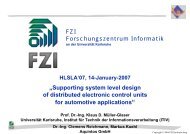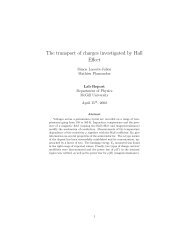Object-oriented framework for modelling and ... - ResearchGate
Object-oriented framework for modelling and ... - ResearchGate
Object-oriented framework for modelling and ... - ResearchGate
You also want an ePaper? Increase the reach of your titles
YUMPU automatically turns print PDFs into web optimized ePapers that Google loves.
START<br />
Time Flow Mechanism<br />
Simulation Time SCAN A Phase<br />
Time Flow Mechanism<br />
Iteration Time SCAN A' Phase<br />
EXECUTE ALL CELLS' TRANSITION FUNCTION B phase<br />
Does all cells'<br />
state converge<br />
?<br />
Terminate<br />
Simulation ?<br />
END<br />
Yes<br />
No<br />
SCAN ALL CELLS C phase<br />
ACTIVITY 1<br />
CellSpreadState == 'inTest'<br />
<strong>and</strong><br />
CellState == spreadCondition<br />
Add neighbouring cells to the active set<br />
No<br />
Yes<br />
ACTIVITY 2<br />
CellPhase == 'quiescent'<br />
Remove the cell from the active set<br />
Figure 12: Three-phase approach modification <strong>for</strong> implicit model simulation<br />
Figure 12 depicts an adaptation of the three-phase approach <strong>for</strong> the simulation of implicit models. A<br />
principal time scanning loop is in charge of the simulation time (A phase). However, the A phase has<br />
been doubled by a smaller loop in charge of the iteration time base (A’ phase). As long as the states of<br />
all cells do not converge, the transition function of a cell is executed. Once the state of a cell converges<br />
it is added or removed from the calculation domain (C phase).<br />
26



